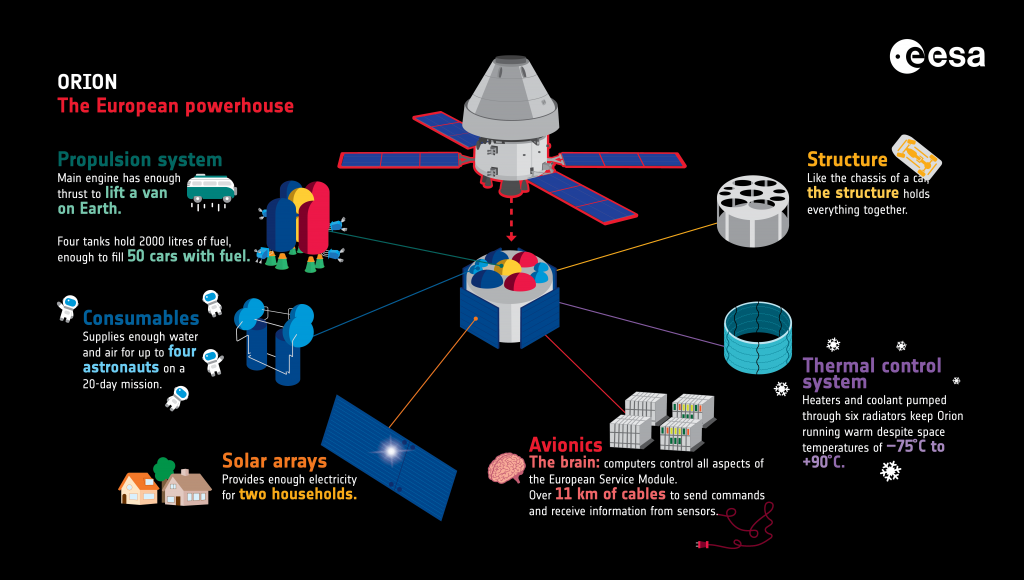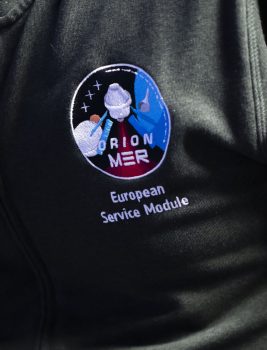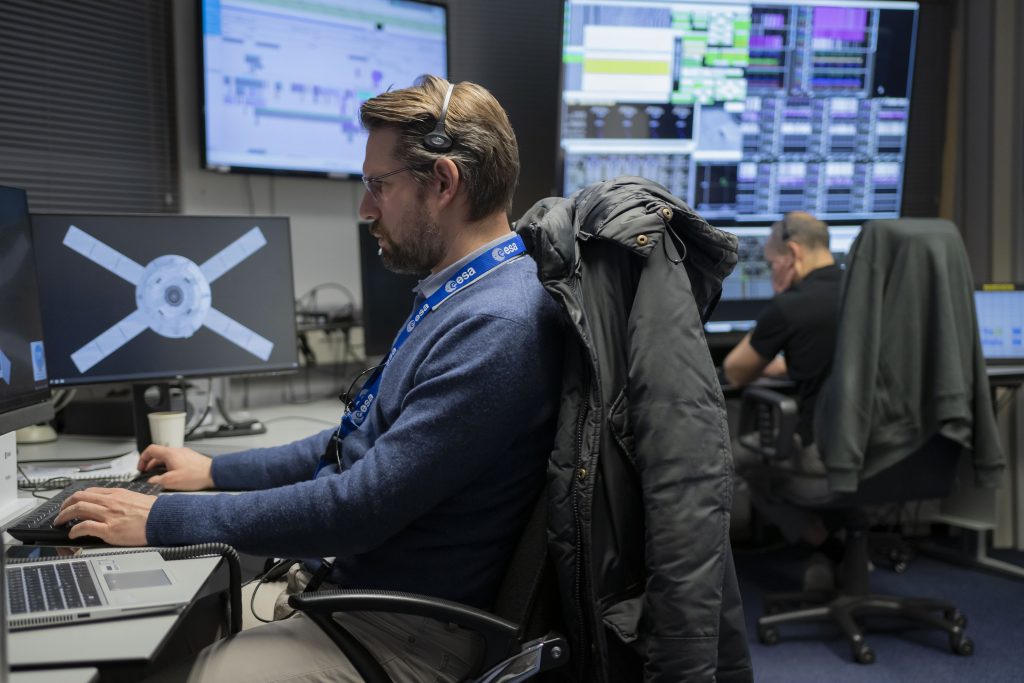This entry on how to fly the Artemis spacecraft Orion with the European Service Module, is according to the person on console, one the most important, and we don’t disagree: safety comes first, and even more so in human spaceflight.
The safety console for the European Service Module has an overview function, the engineers on duty do not monitor a specific aspect of the spacecraft, but monitor the actions taken by the spacecraft and their colleagues – constantly assessing each operation, asking the question: is this safe?
As such, the safety engineer on console needs to know everything, monitoring the solar arrays, the thrusters, the batteries, the communications network, the antennas, and Orion’s position in space.

In human spaceflight there is a rule book for each mission, the “flight rules” dictate what is allowed and what is dangerous, and this is the safety engineer’s guiding book.
“There are hundreds of flight rules, and our job is to constantly consider: will this change in the mission profile require us to abort the mission?” says Horst Tjaden, Airbus safety on console for the European Service Module, “Obviously the answer is most probably: no, but we need to know at all times when we are one failure away from losing the vehicle, as this means we have to abort mission in order to safely return the crew home.”
Pretty much all systems in the European Service Module are redundant, which is a space term for having a backup – if one system fails, there are usually one or more backups that can bring an Artemis mission to a safe conclusion.
Follow the rules

The flight rules indicate the minimum pressures required in the helium tanks, the maximum errors due to cosmic radiation allowable in the computers, or the minimum amount of sunlight reaching the solar arrays to keep electric power.
But the safety engineer needs to think ahead too, will moving Orion in a certain position change the amount of solar power received in a few hours when in eclipse of the Sun? Will firing the thrusters now, leave enough fuel to return home in two weeks’ time? If a solar wing is stuck in a certain position, do we fire the reaction control thrusters as planned, or will they melt or burn the wings?
Years of testing and putting the European Service Module and Orion through its paces has shaped and defined the flight rules. Tested to its limits, the test model and propulsion qualification model give a full indication of what the European Service Module is capable of.
The safety console shows an overview of all the systems, condensed into one screen.


 Automated Transfer Vehicle page
Automated Transfer Vehicle page ATV blog archive
ATV blog archive
Discussion: no comments